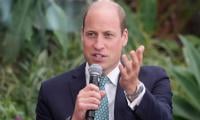Rawalpindi needs more trees
Ask old-timers about Rawalpindi city they experienced as kids, and they would tell you about the lush greenery that the city boasted of once. The city had more open grounds, parks with shady trees and grassy tracts.
“At present, the city is experiencing an extraordinary level of urbanization. A city should contain 25 percent greenery of its total area, Rawalpindi has barely five percent greenery for lack of regular plantation, and no maintenance of the existing ones—to say nothing of unplanned urbanization and development,” says Adeem Raza.
“Utility agencies often dig up streets for maintenance and repair work, many trees get severed in the process. Also roots cannot spread, rendering the trees fragile from within, due to construction works,” says Shujaat Ali.
“What species of trees we are planting? Plant species need to fulfil a set of function other than be visually pleasing. Management of trees in a wide variety of locations in and around the city, including parks, streets, roadsides, and dividers is not proper as each of these places demand different species of trees and shrubs,” says Shabbir Hussain.
Turab Naqvi says: “While planting, we also need to keep in mind whether these species of plants are able to fulfil their function in that particular landscape. The debate over functionality of trees came into discussion when rows of foreign-looking, grotesque trees were planted along the different sections of the city roads.”
“Why foreign species were chosen in a confusing manner, especially when there are many native and local tree species that are more suitable to the city’s environment, weather and cultural context. A tree that will end up being hardly 20 ft. high won’t be able to serve its utilitarian purposes by providing shade and working as an air filter,” says Ali Zia Rizvi.
“Factually, we have proven ourselves wrong when it came to planting different unfriendly alien species. These trees were planted as fast-growing, shady trees with commercial value, but no one had anticipated the thirst of its roots and how the trees would cause a fall in the underground water level,” says Ayaz Abbas.
“They might have increased green cover, but certainly not without posing health and environmental hazards,” argues eminent botanist Nasreen Batool. Even when it comes to planting trees in avenues, we should have a strong precedence of native trees, she believes.
Hasan Mujtaba says: “Luckily we have been blessed with seasonal flower trees that are conducive for roadsides. We must choose trees that will ensure green cover throughout the year and secondly, make sure that we have seasonal flowers flourishing and blooming in the roadside trees. Native trees are able to amaze passers-by with their glorious hues of yellow, red and purple.”
-
 Spotify Introduces New Monthly Subscription Pricing Plan For 2026
Spotify Introduces New Monthly Subscription Pricing Plan For 2026 -
 Shocking Prediction About Meghan Markle's Career In 2026
Shocking Prediction About Meghan Markle's Career In 2026 -
 Kate Middleton Hosts Reception In London As Prince William Out On Engagement
Kate Middleton Hosts Reception In London As Prince William Out On Engagement -
 Mel C Teases 'precious' Future Plans
Mel C Teases 'precious' Future Plans -
 Teyana Taylor On Julia Roberts Telling Her To 'eat A Sandwich' At Golden Globes: 'Started Crying'
Teyana Taylor On Julia Roberts Telling Her To 'eat A Sandwich' At Golden Globes: 'Started Crying' -
 Minneapolis: ICE Officer Fires Bullet After Migrant Attacks With A Shovel
Minneapolis: ICE Officer Fires Bullet After Migrant Attacks With A Shovel -
 Prince William Gets 'mobbed' By Animals During Rural Engagement
Prince William Gets 'mobbed' By Animals During Rural Engagement -
 Angelina Jolie Finally Escaping L.A.?
Angelina Jolie Finally Escaping L.A.? -
 Matthew McConaughey Takes Legal Action To Save THIS Iconic Phrase From AI Misuse
Matthew McConaughey Takes Legal Action To Save THIS Iconic Phrase From AI Misuse -
 Jodie Foster Reflects On Harsh Reality Of Why She Escaped Sexual Abuse As Actress
Jodie Foster Reflects On Harsh Reality Of Why She Escaped Sexual Abuse As Actress -
 Prince Harry, Meghan Markle To Have Baby In 2026?
Prince Harry, Meghan Markle To Have Baby In 2026? -
 Bella Hadid Steals The Spotlight At 'The Beauty' Premiere
Bella Hadid Steals The Spotlight At 'The Beauty' Premiere -
 Taylor Swift 'worst Photos': Singer's Not-so-perfect Moments Spark Debate
Taylor Swift 'worst Photos': Singer's Not-so-perfect Moments Spark Debate -
 Arizona Mother Traces Missing Son Living In Neighbour’s Home After Killing Hm
Arizona Mother Traces Missing Son Living In Neighbour’s Home After Killing Hm -
 OpenAI Launches ChatGPT Translate To Rival Google Translate
OpenAI Launches ChatGPT Translate To Rival Google Translate -
 Top AI Themes Poised To Shape 2026: Here’s How
Top AI Themes Poised To Shape 2026: Here’s How



